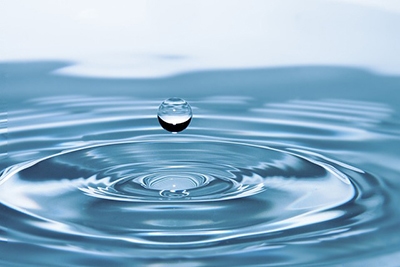Drinking Water
Feeling thirsty?
| Download this episode | Feeling a little thirsty? Bottled water is the fastest growing drink choice in the United States, and Americans spend billions of dollars each year to buy it. Some people drink bottled water as an alternative to other beverages. Others drink it because they prefer its taste or think it is safer than their tap water. Whether it travels through a pipe to your home or comes packaged in a bottle, safe drinking water is essential to good health. All our drinking water comes from similar sources, either from sources we can see, such as rivers and lakes, or from sources we can’t see, such as underground aquifers. In the same way that tap water’s taste and quality may vary from place to place, so too does bottled water’s taste and quality vary among and even within brands. The taste and quality of both bottled water and tap water depend on the source and quality of the water, including its natural mineral content and how, or if, the water is treated. | You’ve probably heard the advice to drink eight glasses of water a day. That’s easy to remember, and it’s a reasonable goal. Lack of water can lead to dehydration, a condition that occurs when you don’t have enough water in your body to carry out normal functions. Every day you lose water through your breath, perspiration, urine and bowel movements. For your body to function properly, you must replenish its water supply by consuming beverages and foods that contain water. So how much fluid does the average, healthy adult living in a temperate climate need? The U.S. National Academies of Sciences, Engineering, and Medicine determined that an adequate daily fluid intake is about 15 and a half cups of fluids a day for men and about 11 and a half cups of fluids a day for women. These recommendations cover fluids from water, other beverages and food. About 20 percent of daily fluid intake usually comes from food and the rest from drinks. | Drinking water can be expected to contain at least small amounts of some contaminants. This doesn’t necessarily indicate that the water poses a health risk. For example, minerals such as magnesium and calcium give water a distinctive flavor, and are essential to the body. At high levels, however, these and other contaminants, such as pesticides or microbes from human wastes, can cause adverse effects or illness. To make sure that all water is safe to drink, the Environmental Protection Agency and the Food and Drug Administration set drinking water standards. The EPA sets standards for tap water provided by public water suppliers while the FDA sets standards for bottled water based on EPA standards. Bottled water and tap water are both safe to drink if they meet these standards. People with weakened immune systems or other health conditions may wish to further treat their water at home or purchase high quality bottled water. | Most healthy people can stay hydrated by drinking water and other fluids whenever they feel thirsty. For some, fewer than eight glasses a day might be enough. But other people might need more. If you do any activity that makes you sweat, you need to drink extra water to cover the fluid loss. It’s important to drink water before, during and after a workout. Your body loses fluids when you have a fever, vomiting or diarrhea so if you’re sick, you should drink more water or follow a doctor’s recommendation to drink rehydration solutions. Other conditions that might require increased fluid intake include bladder infections and urinary tract stones. Women who are pregnant or breastfeeding may need additional fluids to stay hydrated. And remember, you don’t need to rely on water to meet your fluid needs. What you eat also provides a significant portion. Many fruits and vegetables like watermelon and spinach are almost 100 percent water by weight. | When planning an outdoor activity or traveling abroad, it is important to know where your water comes from. It is also important to know if it has been treated, and whether it is safe to use for cooking or brushing your teeth. Exposure to contaminated water is more likely in places where there is no sanitation or water treatment infrastructure, such as at campgrounds or in some foreign countries. Water contaminated with bacteria and parasites can sometimes look clean, which is why it is important to know the source of the water, if and how it has been treated, and whether it is safe before drinking it. Bottled water can be an easy option, but it is also important to know where your bottled water comes from and how it has been treated, especially when traveling in remote locations. Young children, pregnant women and people with weakened immune systems may be more likely to become infected if exposed to contaminated water.
Transcript
How much water is enough?
Transcript
Small amounts of contaminants
Transcript
Covering fluid loss
Transcript
Where does your water come from?
Transcript
